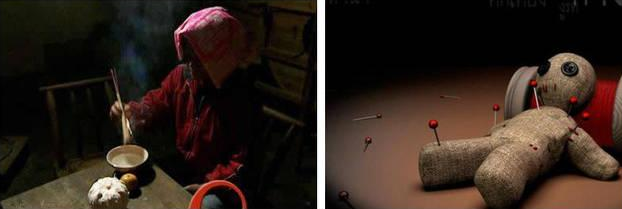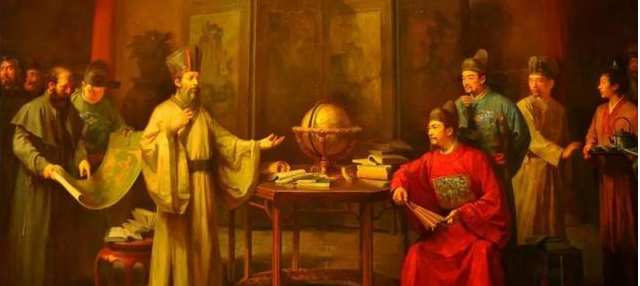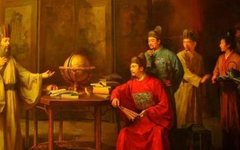Introduction: Who is Li Shizhen? It is said that he was a master of internal cultivation; otherwise, how could he have written such a great medical work in ancient times using only his nose, eyes, and tongue? The book records many medicines that leave us astonished and even challenge our worldview. We do not understand them, do not often use them, and they are regarded by some as dross and superstition. Is this really the case?
Even Great Works Like the Compendium Have Flaws?
The Compendium of Materia Medica (Bencao Gangmu) is a medical work written by the Ming Dynasty physician Li Shizhen, which compiles the achievements of medical science throughout history and has made a significant contribution to Chinese medicine. This great scientific work, limited by its time, also contains some dross, incorporating some folk legends into its text?
Perhaps this is the crux of the purely experiential medical method. This work sometimes makes it difficult to distinguish the witchcraft hidden within folk experiences.
Here are some examples:
Treating Illness with “Gu” (Witchcraft)
“Gu” is a legendary poisonous insect that can burrow into a person’s stomach and cause poisoning. In ancient times, it was considered a terrifying thing. Therefore, ancient sorcerers exploited people’s fear of “Gu” and turned it into a form of witchcraft, such as incantations and witch needles.
The so-called “incantation” is a spell written by a sorcerer. If one wishes to harm someone, this spell can cause the Gu insect to burrow into the victim’s stomach, making them ill or even leading to death; if one wishes to heal, the sorcerer claims that the incantation can make the Gu insect escape from the victim’s stomach, thus saving the patient.
The so-called “witch needle” involves inserting silver needles into a small cloth figure while the sorcerer chants the name of the victim, causing the Gu insect to enter the victim’s body, resulting in illness or death.

Li Shizhen believed in this witchcraft and thought it could be used to treat diseases. In the Compendium of Materia Medica, he even taught people how to create Gu insects, stating: “Take a hundred insects and place them in a jar; after a year, one insect will eat all the others, and this is called Gu.”
Treating Illness with Coffin Wood
This belief also stems from superstition. The ancients feared ghosts and believed that graves were eerie and frightening, avoiding them, especially coffins that had contained the dead. Li Shizhen believed that a coffin that had not been exposed to life for a long time would harbor a type of “yin insect,” which could treat stubborn diseases. He stated in the Compendium of Materia Medica: “Take ancient coffin wood, scrape the inner walls soaked in corpse juice, and grind it finely for medicine.”
Treating Illness with Human Feces and Urine
The book records that the urine of children may have some efficacy in treating diseases, but the Compendium of Materia Medica goes further. Since ancient times, it has been believed in China that prepubescent boys and girls are pure and clean, and their urine and feces are also considered clean, especially that of boys. Li Shizhen firmly believed in this.
He included “Ren Zhong Bai” (Human White) and “Ren Zhong Huang” (Human Yellow) in the Compendium of Materia Medica and introduced their medicinal value. In fact, “Ren Zhong Bai” refers to human urine, while “Ren Zhong Huang” refers to licorice soaked in human feces and urine.
Burning Clothes and Utensils to Ash
The section on medicinal utensils records that items such as pants, undershirts, sashes, headscarves, foot wrappings, raincoats, straw sandals, dead person’s pillows, calendars, statues of Zhong Kui, peach charms, fans, mats, pot lids, steamers, bamboo baskets, brooms, horse tether ropes, toilet sticks, and urine buckets can all be used as medicines, most of which are burned to ash or soaked to treat diseases.
These are hard to accept in today’s context.
Many prescriptions recorded in the Compendium of Materia Medica are folk remedies, and Li Shizhen attempted to provide theoretical explanations to prove their effectiveness.
Prescriptions Based on Superstitious Logic
In the “Water Section,” it is recorded that rainwater collected at different times can treat different diseases.
For example: If a couple drinks a cup of rainwater collected on the first day of spring before having intercourse, it is said to have “miraculous effects” in treating infertility. Li Shizhen explains that this is “to take advantage of the principle of nurturing all things.”
Some are even more bizarre,
For example: Stealing a rich family’s lantern during the Lantern Festival and placing it under the bed will lead to pregnancy. Why?
No explanation is given, but you can guess what kind of logic this is.
Some folk remedies can be guessed based on their rationale.
The Compendium of Materia Medica states that if a fishbone gets stuck in the throat, boiling a fishing net into juice or burning it to ash and drinking it will help dislodge the fishbone. Although no theoretical explanation is provided, it seems logical that since the fishing net is used to catch fish, its ash could also be used to catch fish bones. Li Shizhen firmly believed in such peculiar folk remedies and praised their wonders.
He recorded that someone hanged themselves, and burning the rope used for hanging into ash and boiling it in water could treat madness. Li Shizhen lamented: “From this, it can be seen that there is nothing in ancient texts that cannot be used, it just depends on encountering a wise person.”
These bizarre remedies may have been tested by someone, proving their “miraculous effects,” thus becoming experiential knowledge. After all, recovery from infertility, madness, or a fishbone stuck in the throat can be coincidental; if a miraculous remedy happens to be used, it becomes evidence of its effectiveness.
Indeed, relying solely on experience without scientific experimentation can lead to such issues.
Additionally, the Compendium of Materia Medica includes a large number of excrement-based medicines:
Water from cow hooves, dishwater from three families, water used for sharpening knives, water from pig troughs, water from latrines, soil from under shoes, soil from under beds, soil from cremation grounds, soil from graves, earthworm mud, dog urine mud, mud from the bottom of latrines, mud from under eaves, dust from beams, dust from door hinges, and so on can treat various diseases.
These sound unbelievable today.
The saying goes, “Good medicine tastes bitter,” and “Using poison to counteract poison,” sometimes really is unreliable, and may just be an excuse for dross.
These folk remedies that many do not understand have become the basis for many critics to deny all of TCM. They criticize these fallacies reasonably, but they seem to forget that what was Western medicine like 400 years ago?

We cannot belittle Li Shizhen; in his time, he was undoubtedly a great physician, and the Compendium of Materia Medica is also a great work of pharmacology.
However, we must also recognize that even the greatest physician of the Ming Dynasty was not a deity and was limited by the knowledge of his time. Many of their understandings may seem absurd today, but our understanding cannot fully comprehend those medicines either. Should we then regard them as dross? Be cautious!
It is worth noting that modern Western medicine is also extracting components from feces and urine to treat diseases, as referenced in the links below.
Recommended Reading:
● Xu Wenbing: Using urine in TCM is ignorance, while using urine in Western medicine is science; this is a robber’s logic.
● You can even make money from defecating; the highest payout is 500! Donating feces, urine, and menstrual blood for medical treatment, do you understand?
★ Recommended Book: The Path to Longevity, now at a discount.
Long press to identify

Follow us
(For inquiries, collaborations, submissions, copyright issues, etc., please contact WeChat: 13810949871)

